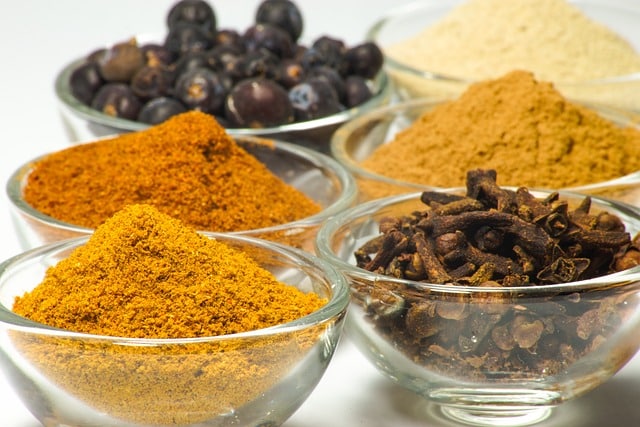Nepal became the latest country after Singapore and Hong Kong to ban the import and sale of Indian spice-mix products manufactured by Everest and MDH over quality concerns. The latest bans on Everest and MDH spices by different countries have raised questions over the future of Indian spice exports, especially to European Union countries, which are cautious about the presence of the same chemical that has stirred the trouble.
It has also raised doubts among Indian consumers, with many questioning India’s food-testing standards and overall food safety.
Why did Nepal ban Everest and MDH spices?
Nepal’s Department of Food Technology and Quality Control has decided to ban the import of Everest and MDH spices from India after detecting harmful pesticides that these spices contain. The banned products are MDH’s Madras Curry Powder, Sambhar Mixed Masala Powder, Mixed Masala Curry Powder and Everest’s Fish Curry Masala. The Department further notified that the amount of ethylene oxide (EtO) these spices contain exceeds the prescribed limits. EtO is a colourless, flammable and remarkable gas used as a chemical in industrial settings and agriculture, and as a sterilising agent in food products, including spices, dried vegetables and other commodities.
Nepal tested the Indian spices of these brands after Singapore and Hong Kong suspended the sale of several products from MDH and Everest due to the alleged detection of carcinogenic agents in their products.
How does the ban on Everest and MDH spices threaten India?
India is the world’s biggest exporter, producer and consumer of spices. It accounts for 12% of the global spice trade exports. India produces 75 out of 109 varieties, listed by the International Organization for Standardization (ISO). Pepper, cardamom, chilli, ginger, turmeric, coriander, cumin, celery, fennel, fenugreek, garlic, nutmeg and mace, curry powder, spice oils and oleoresins are the most exported spices. India exports its spices to more than 150 countries, with the US, China, Vietnam, the UAE, and Malaysia being some of the largest markets.
India’s spice trade
As per the reports of GTRI in 2023-24, India’s spice exports totalled $4.25bn. The primary markets for Indian spices were China, which imported spices worth $928m, the US at $574m and Bangladesh at $339m. Other significant buyers included the UAE ($256m), Thailand ($193m), Malaysia ($147m), Indonesia ($137m), the UK ($122m), Australia ($63m), Singapore ($50m) and Hongkong ($5.5m).
The potential risk posed by the European Union’s scrutiny Economic think tank Global Trade Research Initiative (GTRI) said that every day new countries are raising concerns about the quality of Indian spices. GTRI further warned that $700m worth of exports is at stake due to the regulatory action in international markets.
The European Union countries have already started testing spices exported from India to see if they get similar outcomes as Singapore and Hong Kong.
According to the Spices Board India, the nodal agency for spices exports, the European Union’s quality parameters are more focused on EtO, unlike the US, Canada, and China, where Sudan Dye and Aflatoxin can raise a red flag.
It’s feared that if the European Union finds EtO in exported consignments, it can also reject spice consignments from India, which may have an impact of an additional $2.5bn, bringing the total potential losses to 58.8% of global exports.
Indian authorities have reached out to top spice brands, MDH and Everest, inspected their manufacturing units and suggested corrective measures. It pointed out testing upon some export samples that violated the norms of the countries. Spices Board India, said earlier this month that it has made testing for EtO mandatory for all spices being exported to Hong Kong and Singapore.
Spices Board representatives have also inspected Everest and MDH factories.
On the contrary, the Food Safety and Standards Authority of India (FSSAI) recently announced that EtO wasn’t found in Everest and MDH product samples. FSSAI announced this after extensive testing of the samples of spices sold by the two companies.
Impact on domestic consumers
Amid global scrutiny and bans on Everest and MDH spices, Indian consumers have taken to social media platforms to express their discontent with the ongoing fiasco.
Many claimed on social media that their trust in the brands has eroded after the bans on Everest and MDH spices by different countries.
Some have provided their insights into the issue.
More people are refraining from buying Everest and MDH spices. LocalCircles conducted a survey, spanning 306 districts in India, with over 27,000 respondents participating. The survey revealed that one in three households, ie, 36% of consumers, are inclined to avoid purchasing Everest and MDH spices in the future; 17% intend to continue buying despite safety concerns.
As both are privately owned companies, the bans on Everest and MDH spices by different countries didn’t have any ripple effect on the Indian stock markets. However, between them, MDH has denied using EtO in their products.
A student at the Indian Institute of Mass Communication. Priya writes on global issues and politics.

